What and how can you wrap a chimney pipe for insulation?

During the design of a heating system, many details must be taken into account, including not forgetting about the insulation of the chimney. Such measures protect the pipe itself from premature destruction, and the house or bathhouse from fire. The variety of offers on the construction market allows you to choose an insulating material suitable for its properties to wrap a chimney.
The need for a procedure
Protection is aimed at eliminating the impact of two destructive factors that directly affect the state of the pipe: overheating and humidity. The bathhouse is usually built from a log house or other wood materials, and in a private house or in the attic there are flammable structural elements, even if the roof of this structure is made of metal tiles. Thermal insulation prevents excessive heating of the pipes and subsequent fire. The insulation also protects the system from the harmful effects of condensation: moisture can accumulate in microcracks, freeze and create pressure from the inside, which leads to the rapid destruction of the chimney.
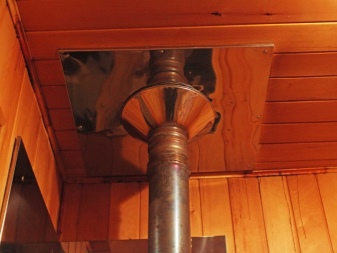
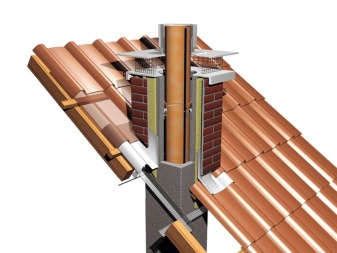
The presence of isolation provides several advantages at once:
- it serves as a reinforcing frame and increases the strength of the smoke exhaust structure, protecting it from mechanical damage;
- the temperature difference between hot gas and cooled pipes is minimized, which prolongs their service life;
- due to the winding, an optimal heat balance is maintained, therefore, the decay products completely evaporate without settling on the walls in the form of aggressive acids that destroy the metal;
- due to its energy-saving properties, fuel is consumed more economically.
It is advisable to provide for winding with insulation at the design stage of the building in order to reduce possible inconveniences when performing work. If this is not done, the roof may have to be partially disassembled.

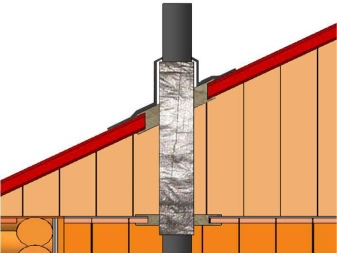
What materials are used?
There are different methods of insulation. You can use soft, fireproof insulation to wrap the chimney and protect the wood walls from fire. Some craftsmen prefer to build special boxes that do not allow excessive heating. In any case, it is necessary to select a non-combustible and heat-resistant material that does not emit harmful substances. Stone wool, soft sheathing made of canvases with foil, expanded clay and reinforced concrete slabs are often used.
For the purpose of waterproofing, the tip of the pipe on the street is closed with a special cap, and an apron is installed around it to protect it from water. Usually, metal or polymer materials are used to create such structures.
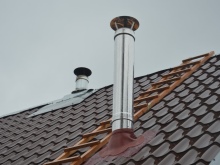
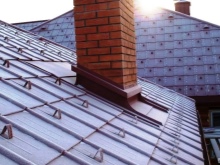
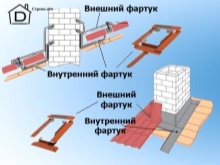
Basalt insulation
Belongs to the category of mineral insulation. They are obtained by processing rock, which is melted in special installations and pulled into thin fiberglass. This type of material is known as basalt wool, sometimes called stone wool. Among the advantages will be the following.
- Low thermal conductivity. This eliminates an additional source of heat leakage and maintains an optimal temperature, using less fuel.
- Hydrophobicity. The material with a fibrous structure does not allow moisture to pass through, so it can be used as a winding even outdoors.
- Non-flammability. Cotton wool can withstand temperatures up to 1114 degrees, after which it can begin to melt, but will not ignite, so even direct exposure to the flame will not lead to the spread of the fire.
- Strength. Fibers can withstand high loads; during operation, the insulation does not lose its shape and practically does not deform.
- Ease. Cotton wool does not weigh too much and does not weigh down the chimney, so you do not have to use an additional support frame.
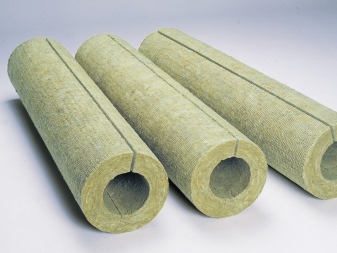
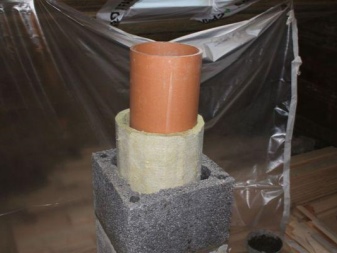
Basalt materials come in various forms. These can be cylindrical shells for insulating pipes, insulating sheets, cardboard based on mineral fibers.
The cost of these building materials is not the lowest due to the complex production technology, but they serve for a long time and allow you to perform high-quality insulation.
Stainless steel casing
You can make a metal sheath that is also suitable for outdoor protection. Usually stainless steel sheets are used for this, since they are not exposed to moisture. It is not difficult to assemble such a structure, it is mounted around the pipe. The intermediate space is filled with insulation, and usually it is all the same basalt wool mentioned above.
The metal casing can be painted or a special polymer coating can be applied to it, so that the structure looks more aesthetically pleasing and does not stand out against the background of the roof. This option protects not only from moisture, but also from mechanical damage.
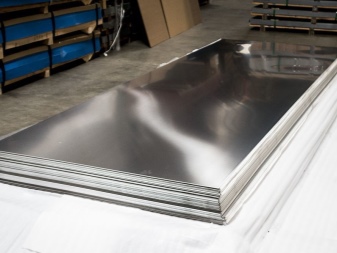
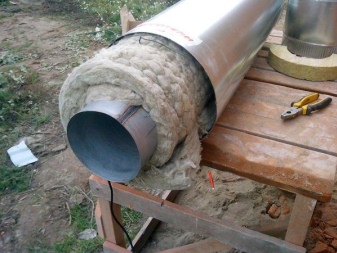
Wood shields
Like the metal casing, they serve as a frame that holds the main insulation. A box is assembled from wooden elements, which is installed around the chimney. The walls should be solid, without gaps. The internal space can be filled with mineral wool or special filling: expanded clay granules, broken brick and sand. Loose filler is cheaper than basalt insulation, and wood is more affordable than stainless steel, which allows you to save money when building a structure.
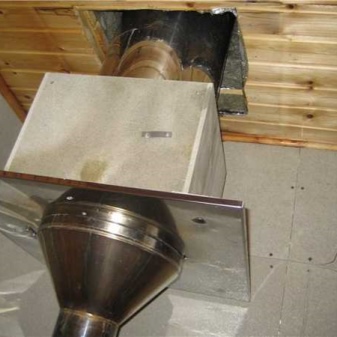
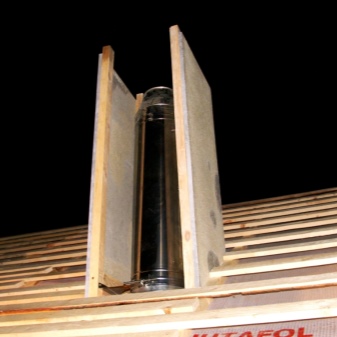
Slag-reinforced concrete insulation slabs
Such blocks are made from safe materials that do not emit harmful elements when heated, so they can also be used to make a frame around the pipe. There are slabs with a textured pattern, painted in various colors, which allows you to get not only functional, but also a beautiful design. Slag concrete has several advantages:
- affordable cost;
- high strength;
- moisture resistance.
The slab structure must be reinforced with a metal mesh, which is installed on the inside. Particular attention should be paid to corner joints. A solution of gypsum, clay and sand is poured as a filler.
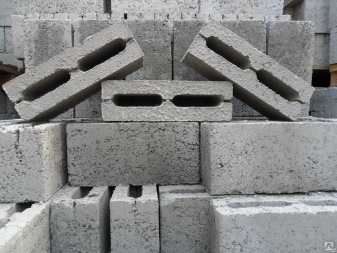
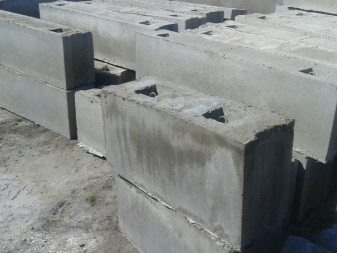
How to properly isolate?
Before starting work, you need to make sure that the chimney complies with regulatory requirements.
- The permissible pipe height is 5 meters or more. This allows you to achieve good draft, in which all combustion products completely leave the chimney.
- Some roofing materials are combustible and therefore require additional fire protection. For roofing material, slate, ondulin coatings, the installation of a spark arrester is required. It is a fine mesh metal mesh that fits over the top of the pipe.
- It is necessary to maintain a certain distance between the chimney and other elements of the building: walls, rafters, ceilings, leaving a space of 250 mm or more.
- For a brick chimney, a fluff should be provided - a thickening in the place where the structure passes through the ceiling.
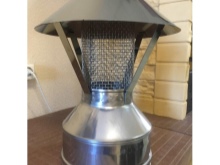
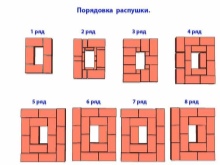
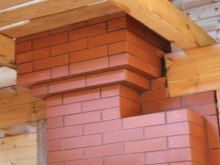
All regulations concerning the chimney are specified in the SNiP 2.04.05-91 document. If the design does not meet these requirements, it is necessary to make corrections to the design.
Working with brick pipes
Chimneys from this material do not heat up too much, so in this case you can do without an additional layer of insulation. A budget option is plastering with a special solution.For its preparation, cement is used as a base, as well as lime and sand. Slag chips can also be added.
The procedure will be as follows.
- Prepare a solution by filling all the components with water and mixing thoroughly. The composition must be used within 5 hours at a cool temperature or within 1-2 hours when working in hot weather, otherwise it will harden. With this in mind, it is better to make the solution in small portions.
- For the first layer, a creamy consistency is needed. The mixture is applied to the cleaned surface without leveling. A thicker mortar is needed to lay the second layer. It is carefully spread and trowelled until a uniform surface is obtained.
- If there are noticeable irregularities, a large amount of compound will be required, so a metal mesh can be used for reinforcement.
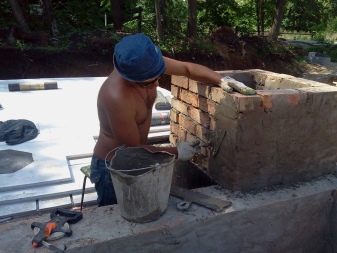
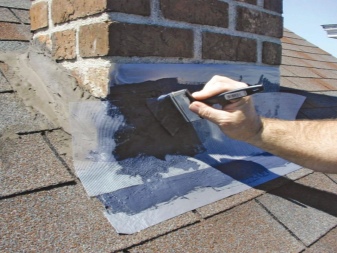
You need to plaster the pipe along the entire length, without leaving open areas. The solution is not hazardous and does not emit toxic substances, therefore it is suitable for use in residential premises.
Brick structures can also be sheathed with asbestos-cement sheet. This material has higher energy saving rates, but it emits harmful substances, therefore it is suitable only for non-residential buildings.
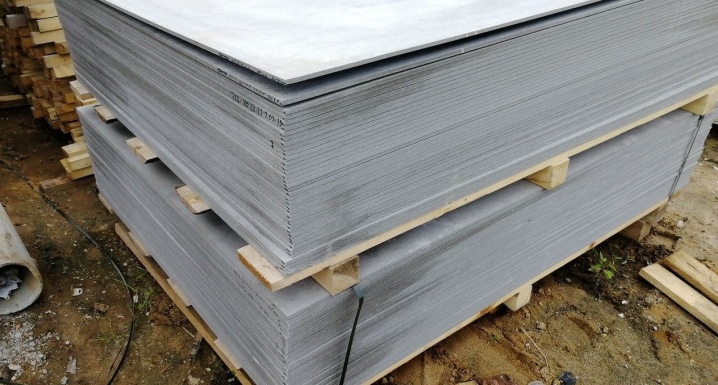
Working with metal pipes
The first stage is the preparation of the insulation. Stone wool is suitable, with which you can wrap a metal chimney pipe, and install protection on top. It is better to cut the insulation in advance in the required amount, so that later you will not be distracted by these actions.
The layers of cotton wool should be at least 5 cm thick to provide an adequate level of insulation. They are laid with an overlap, leaving no gaps and joints, fastened and additionally fixed with steel wire. Thin sheets of metal are used as a casing for protection from external influences: they must be wrapped around and the joints riveted.
You can make a square box, but in this case you will need an additional frame on which all the elements will be held. A similar structure is assembled from metal sheets, the parts are connected with fasteners. Mineral wool is placed inside.
The chimney in the bath can be protected in a similar way, but it is better to make the box not of steel, but of wood, so that the material does not get too hot from the steam.
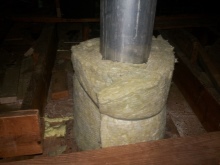
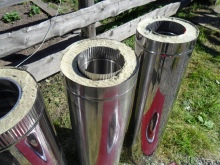
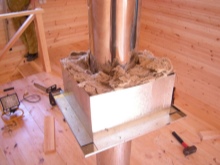
Isolation of passages
These places should be given special attention, regardless of whether it is a brick or metal chimney. It is important to remember some points:
- the holes must be made in such a way that there is necessarily a free distance between the pipe and the walls (at least 30-35 cm);
- metal sheets are installed at the edges, which will serve as a frame for the insulating box;
- free internal space is filled with insulation;
- wooden structures that are located nearby will need to be treated with a special fire-fighting compound.
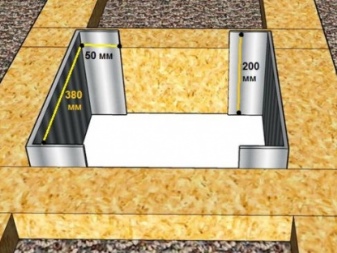
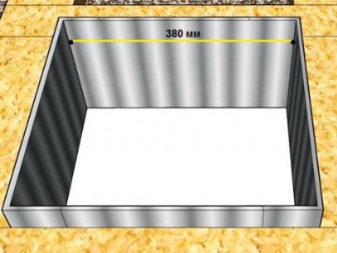
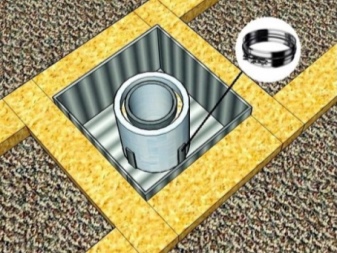
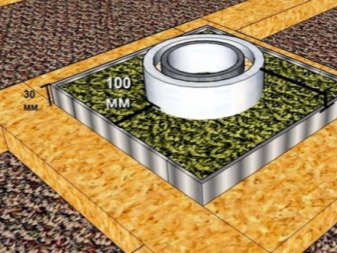
High-quality insulation is the key to the correct operation of the system and the safety of the chimney. At the same time, the pipes need to be looked after by timely cleaning from burning and soot. In addition, do not burn items in the oven that are not intended for such disposal.













The comment was sent successfully.